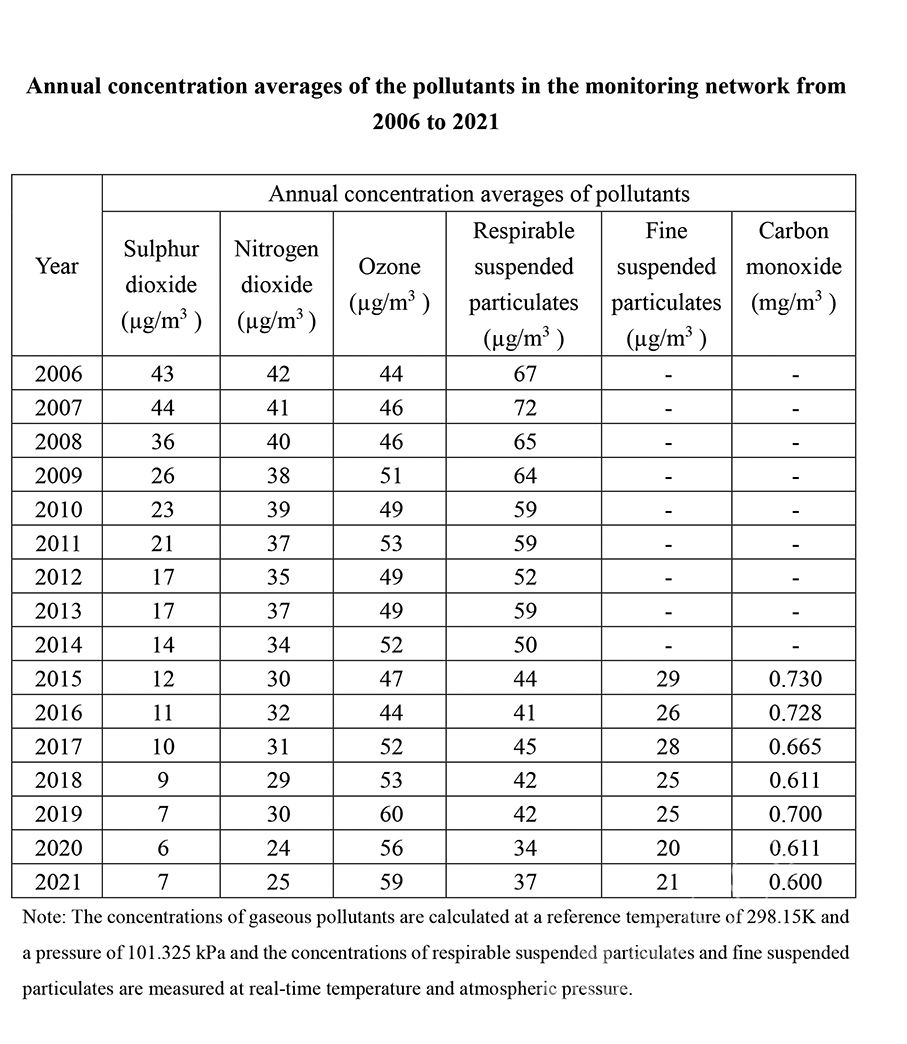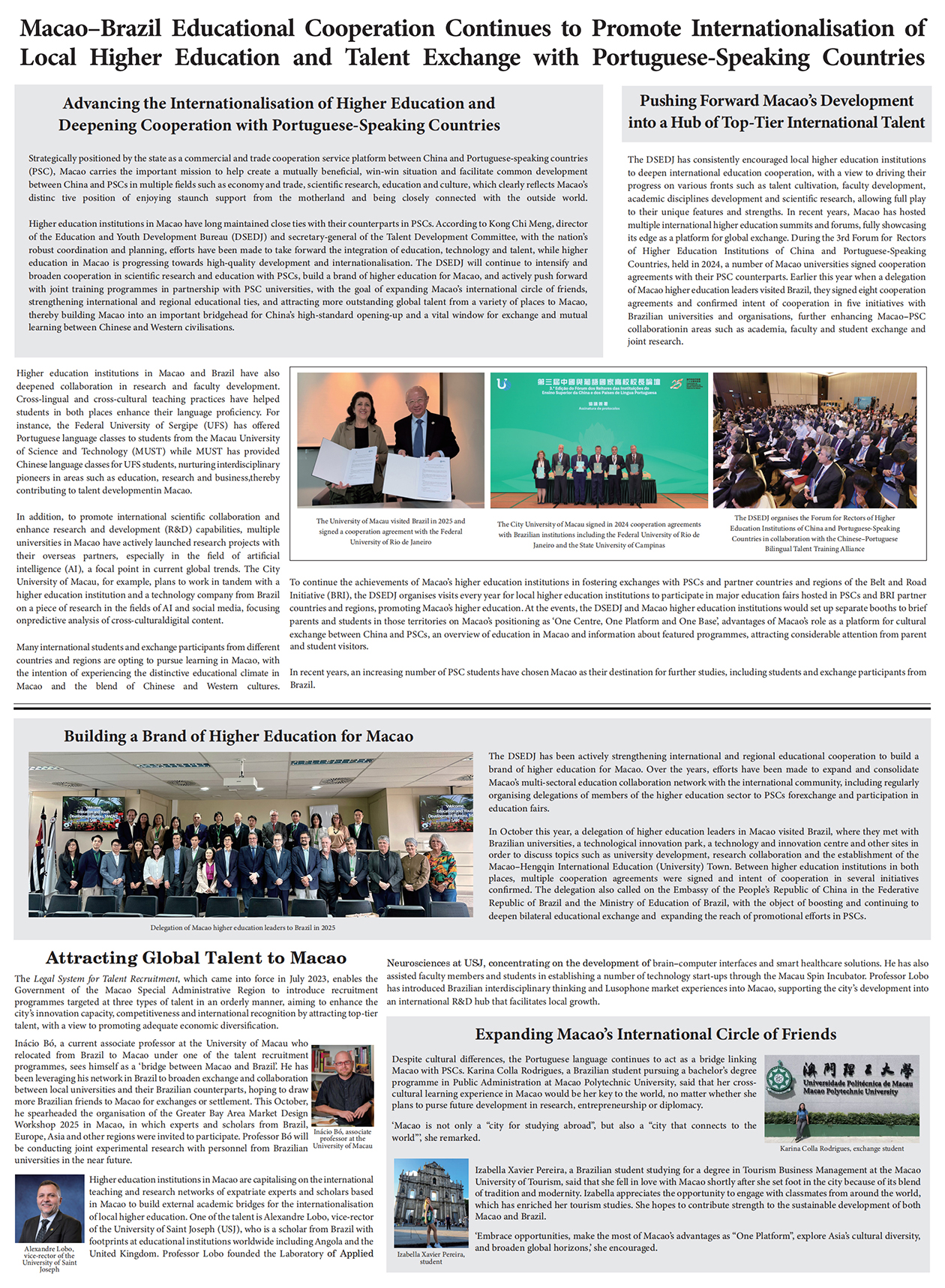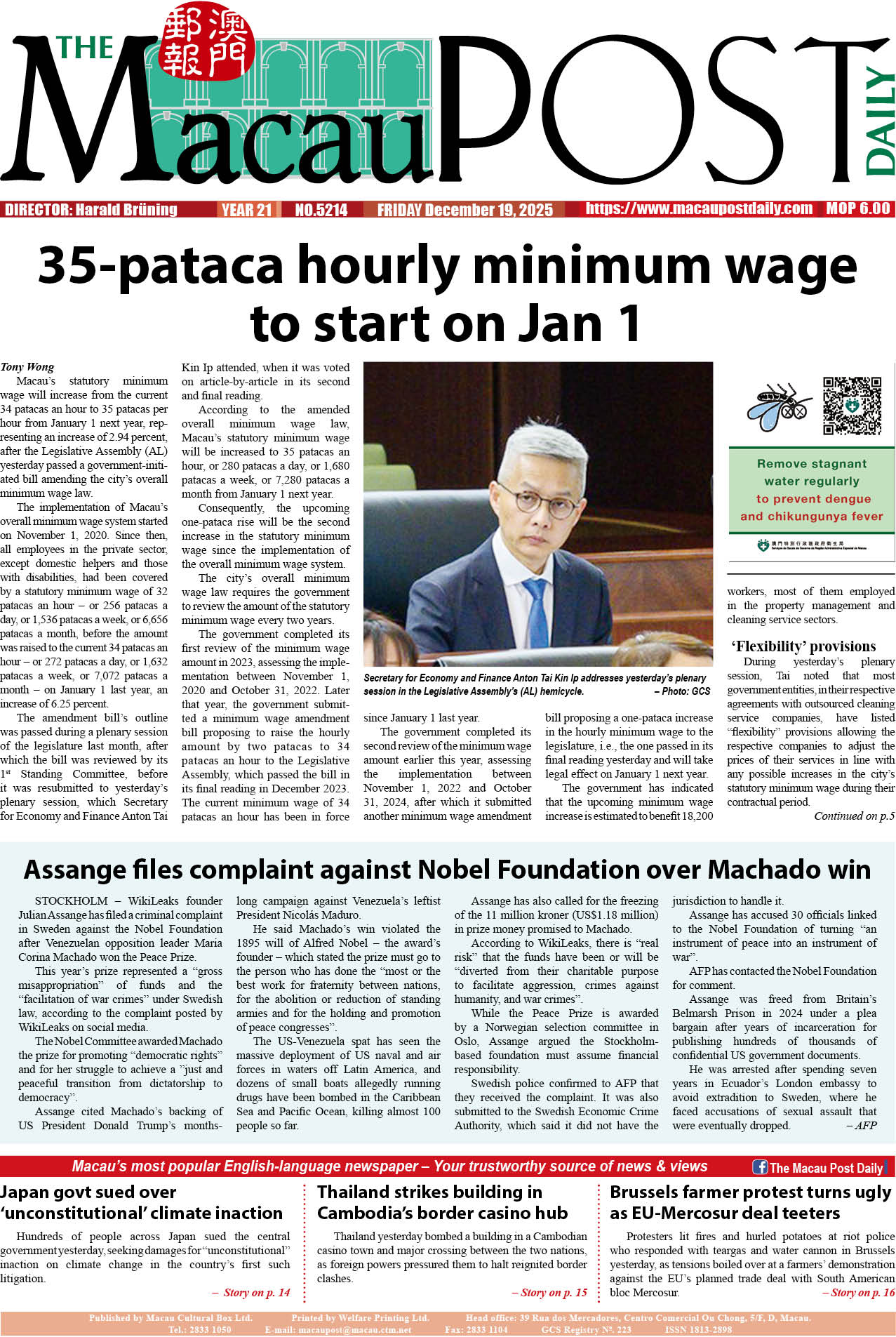The Guangdong, Hong Kong and Macau governments jointly released a report yesterday on last year’s air quality under the Guangdong-Hong Kong- Macau Pearl River Delta Regional Air Quality Monitoring Network, which indicates a continuous improvement in the air quality in the Pearl River Delta (PRD) region, according to a statement by the Environmental Protection Bureau (DSPA).
The statement noted that the regional air quality monitoring networks commenced operation in November 2005. Compared with 2006, the average annual concentration levels of sulphur dioxide (SO2), respirable suspended particulates (RSPs) and nitrogen dioxide (NO2) in 2021 decreased by 84, 45 and 40 percent respectively, it added.
According to the statement, the monitoring of carbon monoxide (CO) and fine suspended particulates (FSPs) was introduced into the monitoring network in September 2014, adding that their average annual concentration levels decreased by 18 percent and 28 percent respectively last year compared to 2015.
However, the average annual concentration level of ozone (O3) increased by 34 percent in 2021 when compared to 2006, which indicates that further alleviation of regional photochemical pollution was required, the statement added.
The statement underlined that in order to study the details of the origins of ozone precursors, their formation mechanism and regional and super-regional transportation characteristics in the Greater Bay Area (GBA), the governments of Guangdong, Hong Kong and Macau launched a three-year study last year to 2024 on the “Characterisation of Photochemical Ozone Formation, Regional and Super-Regional Transportation in the GBA”.
Meanwhile, the statement said that the Macau government rolled out a series of air quality improvement measures, including continuously optimising and raising the emission limits for exhaust gases from vehicles, phasing out obsolete high-polluting motorcycles and promoting the use of electric vehicles, so as to reduce pollution from mobile and stationary sources in accordance with relevant initiatives laid down in the Second Five-Year Plan for Economic and Social Development of Macau (2021- 2025). In order to gradually strengthen the emission controls of stationary air pollution sources, the government has introduced air pollutant emission standards and regulations for various key industrial and commercial sites, such as cement manufacturing sites and sewage treatment plants, the statement added.
The statement noted that the network comprises 23 air-monitoring stations in Guangdong province and the special administrative regions of Hong Kong and Macau, in order to monitor six major air pollutants, i.e., SO2, NO2, O3, RSPs, FSPs and CO.

This table provided by the Environmental Protection Bureau (DSPA) yesterday shows the annual concentration averages of six pollutants in the network from 2006 to 2021.








